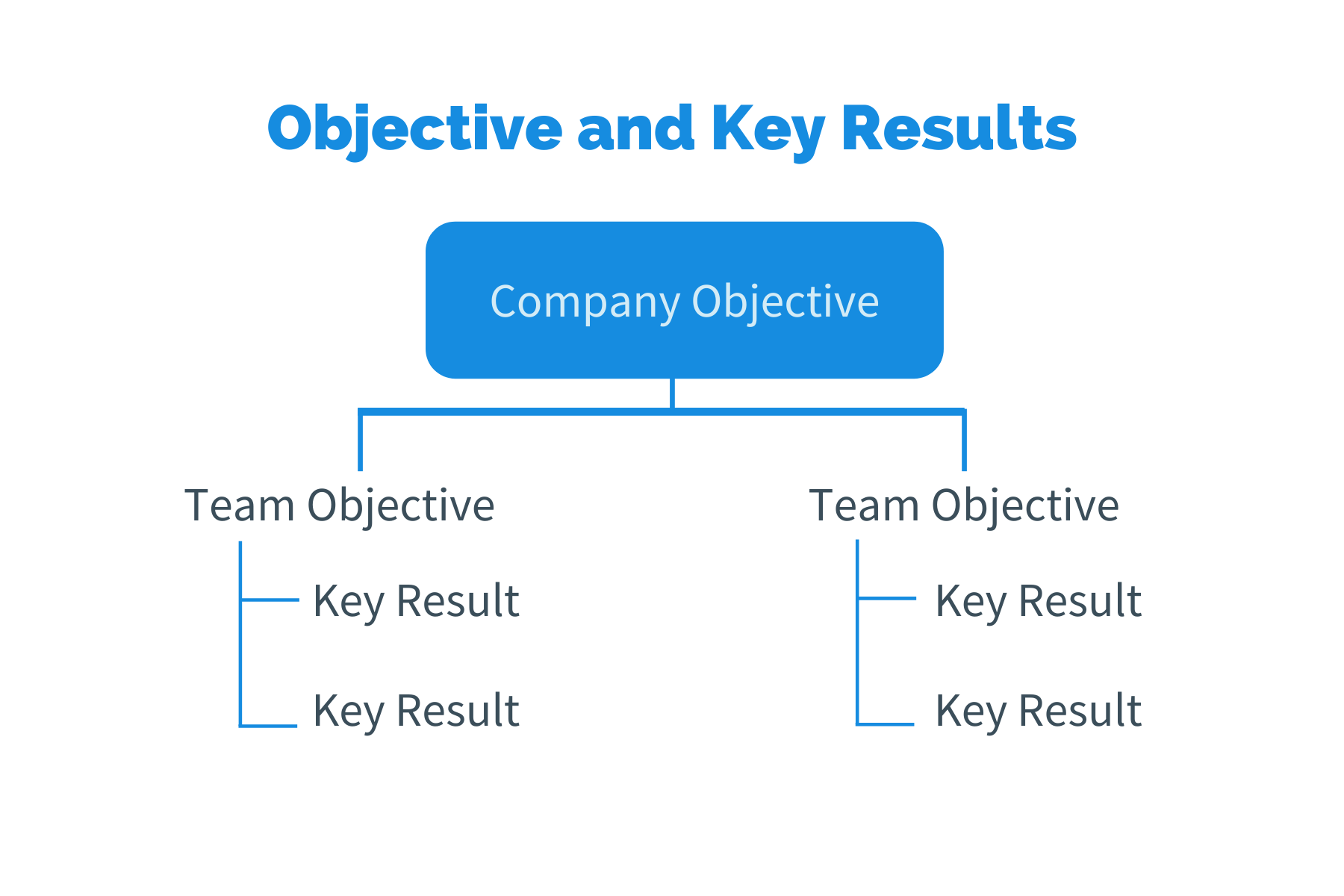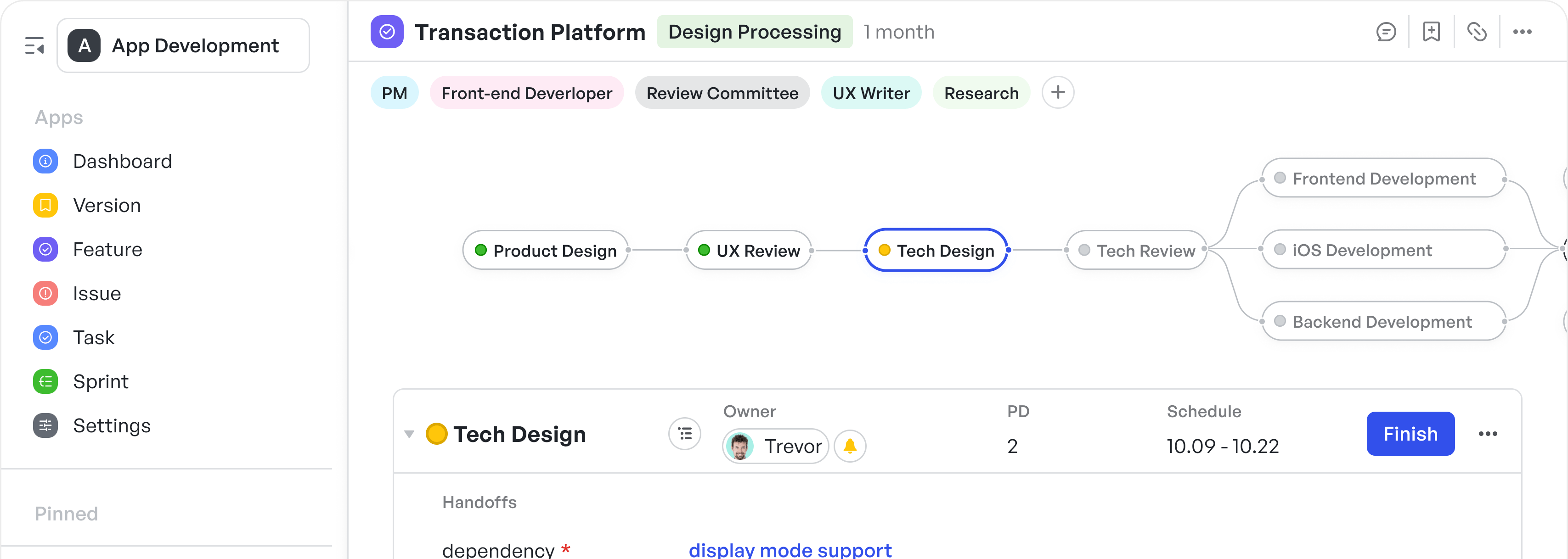Introduction
Pioneered by Intel and popularized by Google, OKRs represent a collaborative goal-setting protocol for companies, teams, and individuals to set challenging, ambitious goals with measurable outcomes. Unlike traditional goal-setting frameworks, OKRs stand out by combining directional aspirations with concrete, trackable milestones, thereby bridging the gap between strategy and execution.
This guide serves as your comprehensive walkthrough on implementing OKRs to foster focus, alignment, and engagement within your organization.

250px|700px|reset
Section 1: Understanding OKRs
An Objective defines what one aspires to achieve, set out in a clear, concise statement that is both inspirational and actionable.
The Key Results, then, are a set of benchmarks that monitor the progress toward the Objective.
They are quantifiable, outcome-based statements that ideally include a clear metric and a deadline, answering the question of how we will know if we are getting closer to our goal.
For example, a company's Objective might be "to become a leader in the sustainable apparel industry." Corresponding Key Results could be "to reduce carbon footprint by 25% by Q4," "to launch 10 new eco-friendly product lines by the end of the year," and "to increase brand recognition in the 'green' market segment by 40%."
Objective: To become a leader in the sustainable apparel industry
K1: to reduce carbon footprint by 25% by Q4
K2: to launch 10 new eco-friendly product lines by the end of the year
K3: to increase brand recognition in the 'green' market segment by 40%
Section 2: Crafting Effective OKRs
Developing compelling OKRs requires a blend of broad vision and focused precision. A well-stated Objective should act as a north star, evoking a sense of purpose and direction. It ought to be aspirational yet realistic, qualitative, and time-bound. Key Results, on the other hand, need to be specific and challenging, quantitatively measured, feasible within a given timeframe, and directly influencing the Objectives.
One common pitfall is confusing Key Results with tasks; remember, these are not activities that will be done (like a checklist) but rather outcomes that reflect progress toward the Objective. They should be difficult enough that achieving all of them is exceptional, yet not so hard that they are impossible. A rule of thumb is that key results should be attainable with a 70% rate of success, providing enough of a challenge without being demotivating.
Key Results ≠ Checklist
Leadership plays a pivotal role in this regard; they must set OKRs that resonate with every member's personal objectives, enabling a cascading effect throughout the organization that ensures alignment and fosters collective effort towards common goals.
Section 3: Implementing OKRs in Your Organization
Implementing OKRs is a strategic process that begins with understanding the organizational vision and ends with individual Contributions that push the company forward. Begin by identifying a few high-level annual company Objectives. Break these down into quarterly Key Results, making them actionable for teams and individuals within shorter time frames. Avoid overwhelming the organization with too many OKRs at once; starting small allows for learning and adaptation.
Rollout involves educating all members about the philosophy and process of OKRs. Pairing OKRs with effective communication tools ensures transparency and maintains an organization-wide perspective on progress and priorities. Moreover, establishing a rhythm for regular check-ins is imperative for teams to stay on track and pivot as needed.
Section 4: Tracking and Measuring OKRs
Tracking Progress
Regular monitoring of key results is essential. Start by setting a cadence for review meetings – weekly or bi-weekly, depending on the nature of the OKR. Utilize shared dashboards that clearly display progress indicators and foster transparency across the organization.
Best Practices:
- Update progress indicators in real time to maintain accurate tracking.
- Encourage team members to share updates and insights regularly.
Measuring Outcomes
Measuring outcomes involves qualitative and quantitative analysis of the key results. Quantitative measures are often numerical targets, while qualitative measures may include milestones or progress indicators.
Tips for Quantitative Measurement:
- Use clear metrics that are easily understandable and relevant.
- Ensure that your targets are ambitious yet achievable.
Qualitative Measurement Insights:
- Incorporate peer feedback and self-assessment to gauge qualitative progress.
- Use customer satisfaction scores or employee engagement levels as indicators.
Adjusting OKRs
OKRs are not set in stone. If certain key results are consistently underperforming, it's time for a pivot. Analyze why the current approach may not be working, and don't hesitate to realign your strategies.
Examples of Adjustments:
- Shifting resources to focus on more impactful outcomes.
- Reevaluating key results to ensure they remain aligned with the overall objective.
Actionable Takeaways
- Establish a robust OKR software tool that enables tracking and provides insights.
Try it for Free!
Meegles' OKR templates assist organizations and teams in clarifying and communicating objectives, promoting collaboration, and enhancing efficiency.
250px|700px|reset
加载中,请稍后
- Schedule regular OKR review sessions that encourage collective analysis and adjustment.
- Cultivate an agile mindset where the realignment of goals is part of the learning and growth process.
- Celebrate achievements and learn from missed targets to foster continuous improvement.
Appendix and Resources
Building a mastery of OKRs is a continuous learning process that benefits greatly from a wealth of available resources. Here, we have curated a selection of materials and tools that can serve as companions on your journey to OKR proficiency:
Books
- Measure What Matters by John Doerr — Often considered the seminal book on OKRs, Doerr elaborates the system that has propelled giants like Google and Intel to success.
250px|700px|reset
加载中,请稍后
- Radical Focus: Achieving Your Most Important Goals with Objectives and Key Results by Christina Wodtke — A practical guide interwoven with a business fable, helping to understand OKRs in action.
250px|700px|reset
加载中,请稍后
- Objectives and Key Results: Driving Focus, Alignment, and Engagement with OKRs by Paul R. Niven and Ben Lamorte — A comprehensive walkthrough for deploying OKRs at all levels of an organization.250px|700px|reset加载中,请稍后
Software Tools for Managing OKRs
- Meegle — Each objective can have multiple key results associated with it, which can be tracked through Meegle's reporting features. This enables teams to monitor progress and make data-driven decisions.
250px|700px|reset
加载中,请稍后
- Ally.io — A tool that integrates with popular business applications, providing OKR tracking with powerful analytics and insights.
- Perdoo — A simple-to-use, robust platform that offers a comprehensive approach to OKR tracking and strategy execution.
Forums and Communities
- OKRs.com Forum — A platform to engage with OKR experts and enthusiasts to exchange ideas and best practices.





